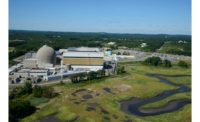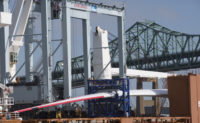
The discovery of concrete cracks from an alkali-silica reaction, or ASR, in five safety-related structures at New Hampshire's Seabrook nuclear powerplant has prompted plant owner NextEra Energy Resources to launch several ASR studies as part of a comprehensive corrective action plan.
Seabrook, which first reported the condition last June, is the first nuclear facility to discover and report evidence of ASR, according to Nuclear Regulatory Commission safety experts.
Groundwater infiltrated five below-grade structures, according to a Jan. 20 NRC inspection report. Furthermore, the report notes that the structures can continue to perform their safety function.
"We have a comprehensive strategy in place supported by ASR experts from across the country to effectively manage ASR short and long term," says Alan Griffith, spokesman for NextEra Energy, Juno Beach, Fla. "We will continue to demonstrate that ASR has not and will not impact our ability to operate safely."
NextEra inspectors first detected ASR in an electrical tunnel in June 2009 during license-renewal inspections. ASR can occur when silica in some aggregate reacts in the presence of water containing sodium or potassium, commonly found in cement paste. The reaction produces a gel that fills the pores of the concrete; its expansion then causes the concrete to crack.
In April, the Union of Concerned Scientists released a report by Paul Brown, Pennsylvania State University professor of ceramic science and engineering, listing ASR concerns at Seabrook. Full-scale structural tests begin this month at the University of Texas, with a wide range of other investigations to follow.






